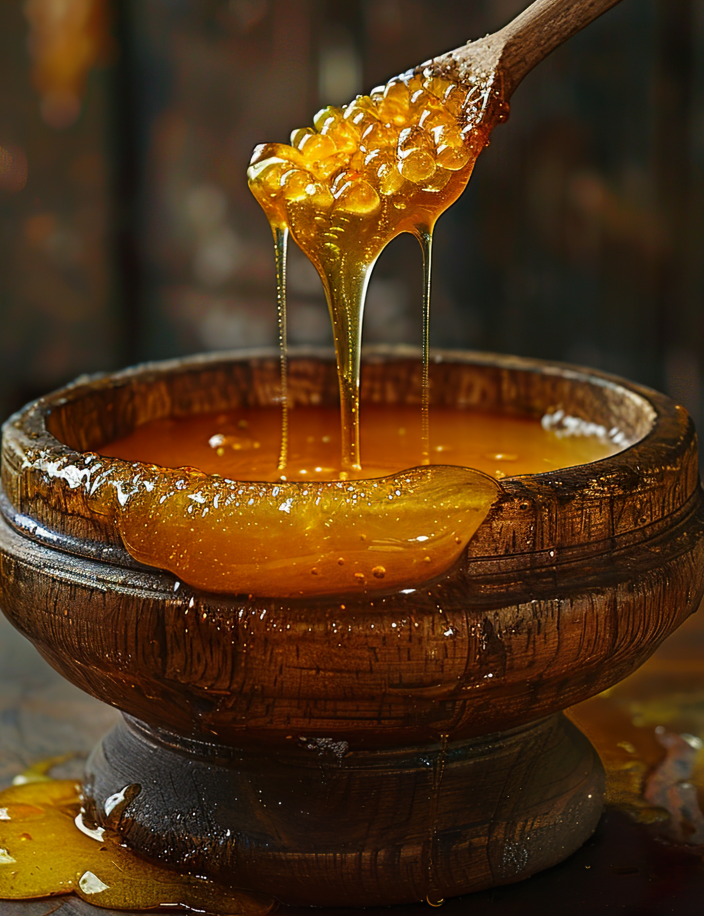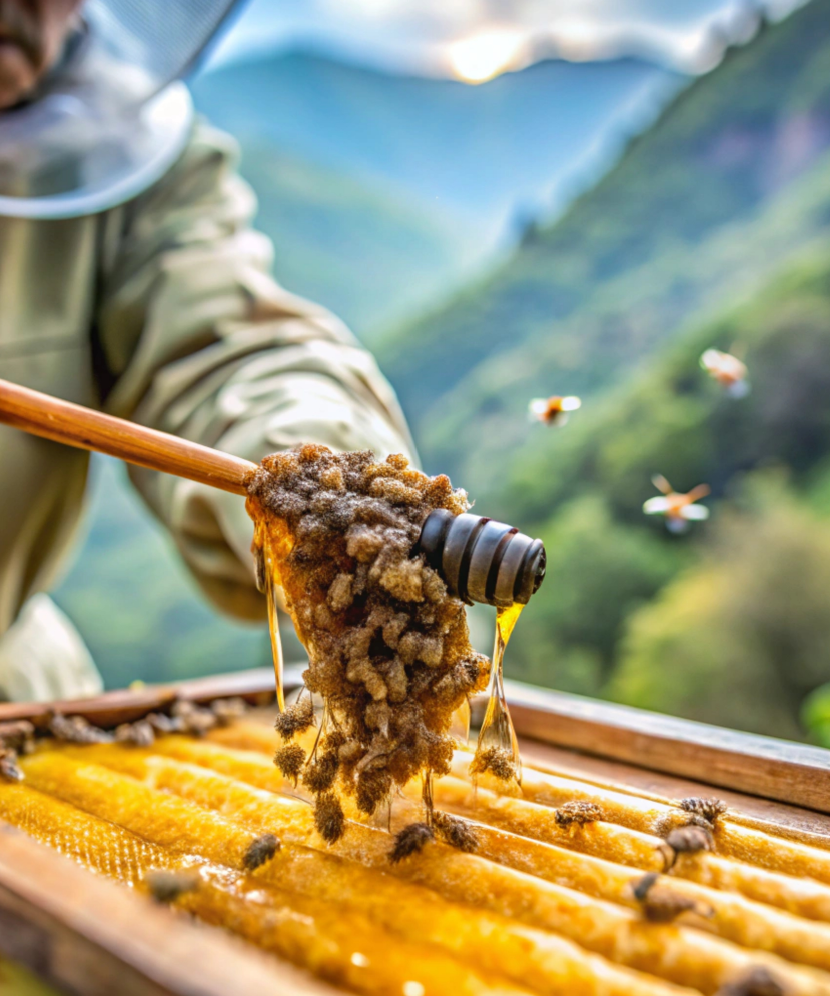What is Mad Honey?
Mad Honey is a unique, rare honey produced in the high altitude regions of Nepal and Turkey. In the Himalayas, this honey is collected by wild cliff bees (Apis laboriosa), which are the largest bees in the world. The honey gets its special character from the nectar collected from rhododendron flowers, which contain grayanotoxins - natural neurotoxins that give the honey its hallucinogenic and psychoactive effect.
The term "mad honey" is derived from the powerful effects that consuming this honey can produce. In small quantities, it can trigger a feeling of euphoria, dizziness and mild hallucination. At higher doses, however, the honey can cause nausea, vomiting and even dangerous health consequences. For this reason, it is often referred to as "mad honey".
Mad honey has a long history in Nepalese culture and is prized not only for its intoxicating properties, but also for its purported medicinal benefits, such as relieving joint pain and high blood pressure. However, despite its supposed benefits, caution should be exercised as taking too much can pose serious health risks.

Production of Mad Honey: The role of Himalayan bees
Mad Honey is created by the work of Himalayan giant bees (Apis laboriosa), which collect the nectar from rhododendron flowers in the high mountains of Nepal. These flowers contain grayanotoxins, which give the honey its psychoactive effect.
The honey harvesting process in Nepal
Honey harvesting is a centuries-old tradition carried out by the indigenous Gurung people. It involves:
- Climbing steep rocky cliffs: The bees build their nests on hard-to-reach cliffs at altitudes of up to 3,000 meters. The foragers use ropes and bamboo ladders to get there.
- Smoke to calm them down: To drive the bees away, the foragers light sources of smoke.
- Harvesting the honeycombs: They use long poles to cut out the honeycombs and transport them to the villages.
This dangerous process makes Mad Honey a rare and valuable product.
The effect of Mad Honey: a natural drug
Mad Honey works through grayanotoxins, which affect the nervous system. In small quantities, honey produces
- Euphoria
- Dizziness
- Slight hallucinations
These effects occur after about 15 to 30 minutes and last for several hours.
Medical effects
In Nepalese folk medicine, Mad Honey is used to lower blood pressure, relieve joint pain and generally strengthen the body.
Risks
In higher doses, Mad Honey can cause severe side effects such as nausea, dizziness and heart problems. Caution is therefore advised.

Is Mad Honey legal in Germany?
In Germany, the legal status of mad honey is not clearly regulated. As the honey contains psychoactive substances, it falls into a gray area. It is not explicitly classified as a drug, but is also not subject to regular food controls. The sale and import of mad honey to Germany can therefore be problematic, as it may be considered a questionable foodstuff or even potentially dangerous.
What you should consider before consuming or buying Mad Honey in Germany
- Legal regulations: Find out about the regulations on importing foods or substances with psychoactive ingredients before you buy.
- Customs controls: The import of Mad Honey could be stopped or confiscated at customs if it is deemed risky.
- Reliable sources of supply: To minimize risks, buy Mad Honey only from reputable suppliers and pay attention to quality.
- Safe consumption: As with any psychoactive product, it should be consumed with caution, as side effects such as dizziness or nausea can occur.
It is therefore advisable to be careful if you want to buy or consume Mad Honey in Germany.

The dangers of Mad Honey: why caution is important
Mad Honey contains grayanotoxins, which can cause dangerous side effects in large quantities, including
- Nausea and vomiting
- dizziness
- cardiac arrhythmia
- Drop in blood pressure and even fainting
The symptoms usually occur 1 to 3 hours after consumption and are particularly dangerous for people with cardiovascular problems.
Safe dosage
- Small amounts (half a teaspoon) are recommended.
- Do not consume daily to minimize risks.
Caution is important as the effects can vary greatly.








